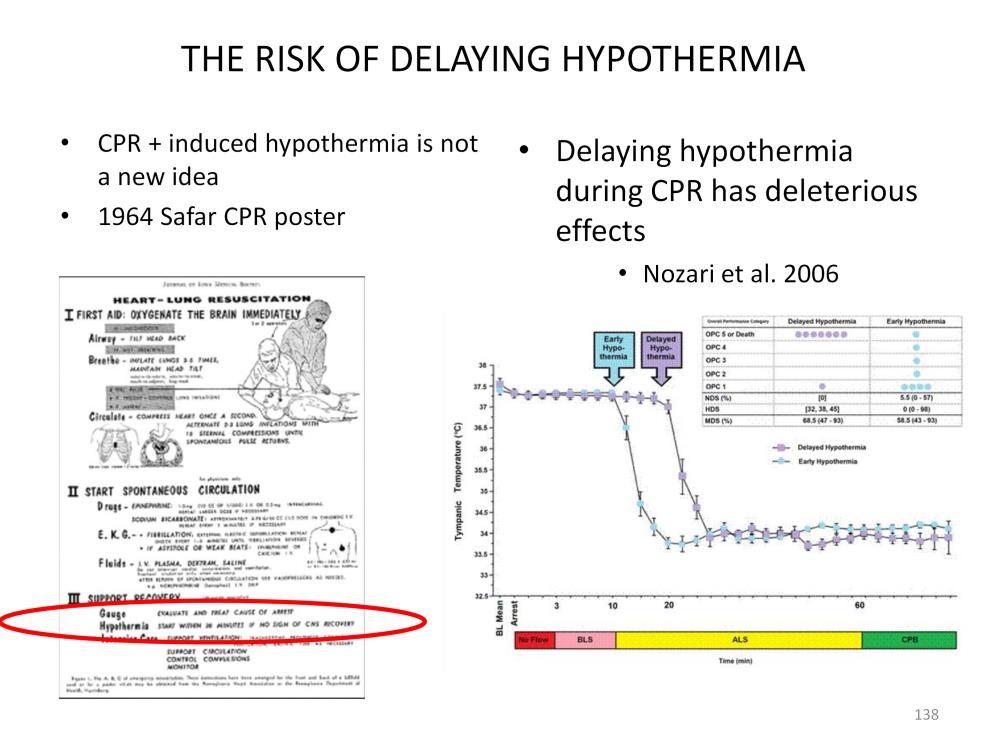
Dr. Peter Safar (1924-2003) together with James Elam developed resuscitation CPR as it is currently used throughout the world. It was first implemented at Johns Hopkins in 1959. A CPR poster dated to 1964 instructs that hypothermia be instituted if signs of CNS recovery are not evident within 20 minutes. Unfortunately the American Heart Association did not recommend implementing hypothermia until 2005, depriving patients the benefit of hypothermia for 40 years.
The importance of early hypothermia can be illustrated by a 2006 article by Nozari*. During experiments with dogs, hypothermia was induced by the intravenous administration of cold IV solution during CPR/BLS/ALS resuscitation. A delay of 10 minutes in administering the cold solution while doing CPR resulted in a much higher mortality rate compared to when hypothermia was induced 10 minutes earlier.
Most cardiac arrest patients will benefit from hypothermia induced during CPR by the administration 30 mls/Kg of ice cold crystalloid solution, whether the heart starts spontaneously or ECPR is instituted.
*Nozari A, Safar P, Stezoski SW, et al. Critical time window for intra-arrest cooling with cold saline flush in a dog model of cardiopulmonary resuscitation. Circulation. Jun 13 2006;113(23):2690-2696.

Perfusion Theory is an educational platform for the Oxygen Pressure Field Theory (OPFT). August Krogh’s theoretical concept of the oxygen pressure field is explained and then applied to clinical applications in perfusion practice.